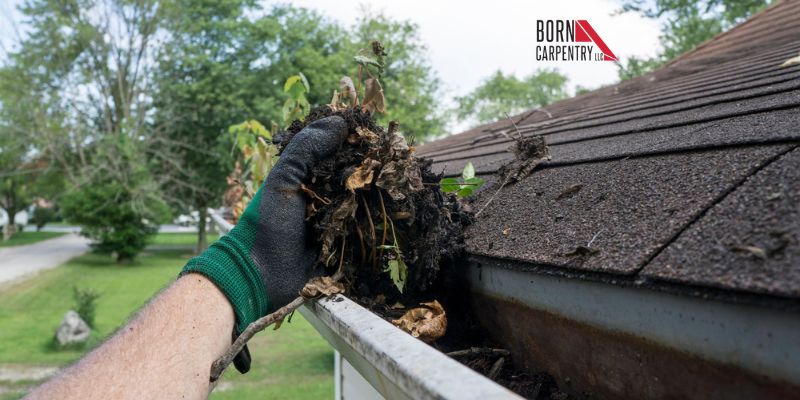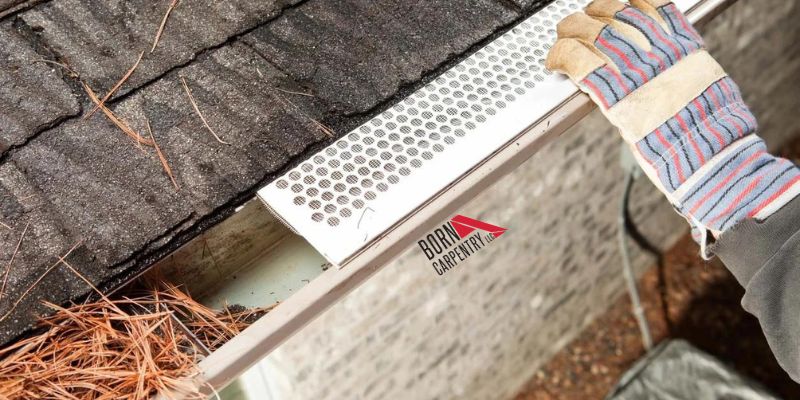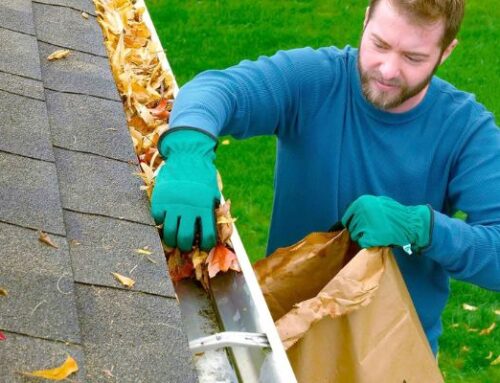To prepare your downspouts, gutter, and roof system for the winter season, the best time is fall. During fall, it is essential to consistently maintain your gutters. Conduct inspections both before and after storms to ensure they remain in good condition. This maintenance will help prevent potential roof leaks and safeguard the long-term durability of your roof for a clean and functional home.
Essential Tips for A Clean and Functional Home
By gathering and channeling rainwater away, gutters help to prevent potential damage in your home. Although your roof is designed to safeguard your home from adverse weather, prolonged exposure to excessive water can result in leaks and rot.
To ensure the protection of your property, here are essential tips to help you maintain a clean and functional home:
1. Clean gutters twice a year
For a cleaner and more functional home, you should clean your gutters at least two times a year. You can schedule this in advance of winter and once more in the spring for adequate maintenance.
Additionally, you can perform a visual check following any severe storm. If you hear the sounds of twigs, leaves, or branches hitting your roof and walls during high winds, immediately inspect and clear any noticeable debris. This will help you to maintain unobstructed gutters and downspouts.
2. Remove existing debris

It is common for gutters to accumulate debris from the roof. This debris is carried down by rain or gradually descends due to gravity. If you can and have a good understanding of the basics, you can undertake the cleaning by yourself.
However, if you do not understand what it takes, your roof is slippery, has steep angles or your residence is two-storied, you should contact the services of professional roofing contractors. They will help perform an effective and safe job. They can also provide valuable guidance, using their methods and safety precautions. They may even show you how to DIY in the future.
3. Clear the downspouts
While your gutters collect water and roof debris, the downspouts manage the rest. Without the downspouts, water would accumulate at the foundation of your home, posing a risk to its structural integrity. Inspect your downspouts for corroded joints, holes, leaks, and rust, as you did with the gutters.
Address any identified issues on time and replace downspouts that are damaged. If the runoff gathers too close to your foundation or walkways, consider installing downspout extenders to ensure more effective drainage.
4. Inspect for leaks and holes
After completing the gutter cleaning and ensuring clear downspouts, you must also conduct a thorough gutter inspection for signs of holes, leaks, and rust. These issues are most likely to occur at the joints of the gutter, where the metal seams were welded together. You can get gutter patching kits and also apply caulk or sealant to reinforce weak or corroded joints.
Additionally, look for areas where the gutter framework has become detached from the roof or siding, which requires reattachment. If the gutters are severely dented, rusted, or deteriorated, you should consider replacement. Materials like vinyl, copper, or aluminum for gutters and downspouts are valuable investments due to their rust resistance features.
5. Use a plastic scoop
Using your hands to manually remove from your gutters is both ineffective and unpleasant. The bulk of the debris that accumulates in your gutters during the autumn and winter typically consists of dead leaves and other organic matter that readily decomposes.
This debris has the tendency to congeal in your gutters, particularly when exposed to consistent or extended moisture. Make the task easier by using a basic plastic scoop to keep your hands clean and make the job more straightforward.
6. Avoid dumping debris on the lawn
It is common to assume that most of the debris you clear from your gutters is organic. You may think it is harmless to leave it on your lawn after removal. However, the organic nature of the material does not guarantee it is beneficial for your plants or grass.
Rather than potentially suffocating your vegetation with sludge, avoid dumping debris on the law. For this reason, you will be making a wise decision by placing a tarp on your lawn and depositing the debris onto it for proper disposal.
7. Flush and don’t just scoop
Scooping and scraping are effective for clearing significant blockages from your gutters. However, you must flush them with water from a hose immediately afterward to dislodge smaller particles for a thorough cleaning.
Additionally, you may also consider upgrading to seamless guttering. You are sure to find different types in the market, allowing you to enjoy the maintenance-free benefit.
8. Use gutter covers

Gutter covers are barriers that prevent debris from infiltrating and accumulating in your gutters. Typically made from materials like wire mesh, foam, or metal grates, these covers securely attach to your existing gutters.
While they may require an initial investment, they offer substantial long-term benefits by reducing the need for labor-intensive manual cleaning in the future. As a result, it is a worthwhile investment for your home.
9. Seek professional help
When it comes to addressing winter gutter maintenance, it is recommended to reach out to seasoned roofing contractors. These professionals have the knowledge and experience needed to comprehensively evaluate your unique requirements.
By seeking their expertise, you can receive guidance and recommendations to guarantee that your gutters are maintained in optimal condition. This approach ensures the functionality of your home during the winter. Knowing that your gutters are in the hands of skilled professionals also provides peace of mind.
Conclusion
Winter gutter maintenance is crucial for preserving the integrity of your home. By following these essential tips, you can minimize the risk of damage, leaks, and costly repairs during the cold season. Ensure that your gutters are free from debris, properly insulated, and well-maintained to enjoy a clean and functional home throughout the winter.





